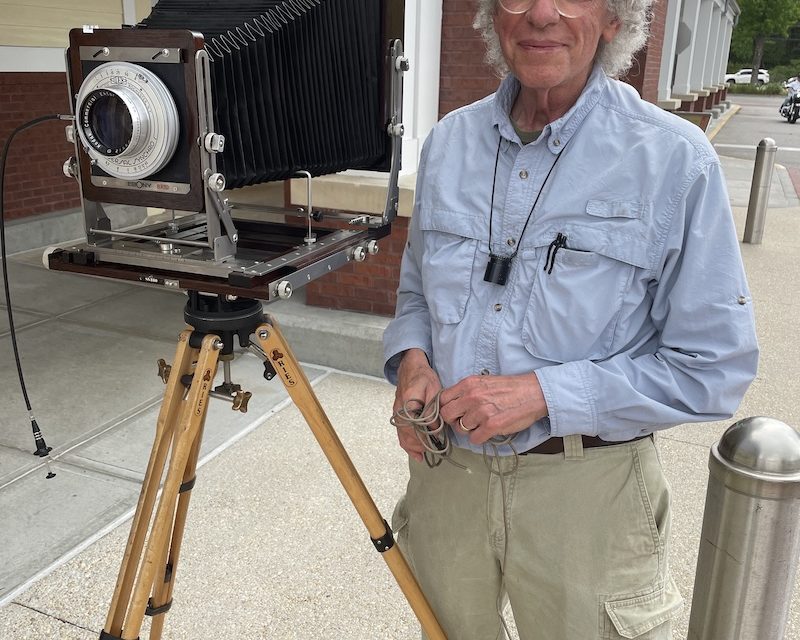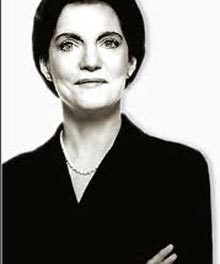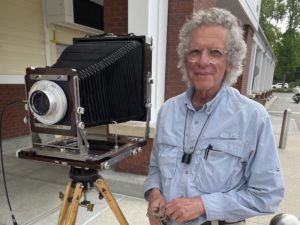
Robert Kalman in Beaufort, photo by Jeff Evans
New York photographer Robert Kalman and his wife Linda have been on the road for weeks now. It’s what they call the “Southern leg” of a journey they started a year ago, and they’re trying to finish up by June. It’s getting hot down here.
During the first leg, the couple traveled through their home state of New York, shooting portraits of people they met here and there, and asking them to answer the deceptively simple question: What’s it like for you to be an American?
They got lots of good pictures – good answers, too – but at some point, Robert said, it began to dawn on him that, “New York doesn’t really represent the United States of America.”
Divided as we are, I think we can all agree about that.
So the Southern leg of the tour commenced in early May and is still happening as I write.
Beaufortonians, if you were downtown on Bay Street or outside the VFW or at the Port Royal Farmers Market the weekend of May 14th, you might have seen Robert and Linda – his 8×10 view camera’s hard to miss – and maybe you struck up a conversation. Maybe you even had your portrait made and answered Robert’s question in your own handwriting. If so, it’s possible you and your impeccable cursive will appear in his next fine art book, which he hopes to have published before the 2024 presidential election.
I met Robert and Linda on Lady’s Island, outside Publix, where I had some questions of my own. Like: What possessed you to take on this epic project?
Apparently, it all started with flags.
“We began thinking about it during Covid,” Robert told me. “We were driving around New York state, and we saw all these damaged and/or poorly displayed American flags. It kind of offended me.
“Then one afternoon, we drove through a neighborhood where there were just so many flags. These were nicely displayed – but in a
residential area with 29 houses, we counted 17 flags! – and I said to Linda, ‘Looks like a lot of Americans live here.’ It was kind of a joke, a throwaway line. But then I remember saying, ‘I wonder what it’s like for them to be Americans.’
“Two or three days later, the January 6th insurrection happened, and I thought to myself: It’s time to go out and actually ask them.”
The Kalmans started their project in earnest the following June. Now it’s a year later, and the Southern leg is winding up.
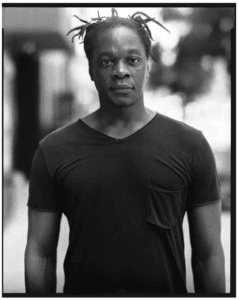
Photo © Robert Kalman
Before I met them in Beaufort, they’d been to Richmond, Va., Whitehill and Paxton, N.C., and Florence, S.C. After Beaufort, they headed to Plains, Ga., then Montgomery, Ala. They were contemplating Atlanta and Chattanooga last we spoke.
This is not the couple’s first trip to the South. That happened back in 2017, when Robert did a photography project on Confederate monuments.
Hearing this, I asked what I always ask when I meet folks from “up North” – especially when they’re here on a mission like Robert’s: Was the South what you expected?
“I didn’t have any specific expectations,” he told me. “The only expectation I had was to make photographs of objects I assumed were about to come down. I processed them to look like they were shot in the 19th century, using tintype. Gave them kind of a warm, nostalgic feel that, frankly, they didn’t deserve. Many of those monuments are gone now. I have one of the last collections of these photographs.”
In 2018, that collection became a solo exhibit at New York City’s SoHo Photo Gallery.
Robert Kalman is a big-time photographer and very New York – yes, New York can be an adjective – which is not something he told me, but is easily gleaned by perusing his sleek website. There you’ll see a long list of accolades, publications, and exhibitions galore. You’ll also see hundreds of arresting black and white photographic portraits, neatly arranged in digital portfolios with labels like “Budapest,” “Instanbul,” “New York Diptychs II,” and “Transgender Israelis.”
There are also portfolios for “Parade Unrest: The Confederate Monument Controversy” and “What’s it like for you to be an American?” The latter portfolio features portraits from the first leg of Robert’s current photographic adventure – the one that happened in New York state.
Spend a little time online with these fascinating portraits – each accompanied by a handwritten answer to the aforementioned question – and watch the technicolor crazy quilt that is American culture unfold before your eyes.
There are young people, old people, white people, and people of color. There’s a girl in a head scarf, a man in an eyepatch, a woman who looks like your third-grade teacher, and a guy holding a shotgun, wearing a tee-shirt that says “Ammosexual.”
There’s a young black man with dreadlocks whose handwritten statement reads: “Being an American means questioning what it means to be an American.”
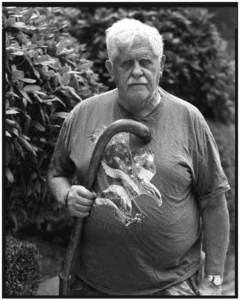
Photo © Robert Kalman
Next to him is a middle-aged white guy with flags on his tee-shirt, which reads “I am American-American.” His statement? “America is still the land of opportunity. Anything is possible. If you can dream it, you can achieve it.”
Beneath his portrait, you’ll see a young woman – maybe college age – with pretty, pale skin, wearing overalls. Her statement is longer, and it starts like this: “I want to be proud of being an American but even this thought implies something wrong. Maybe. I don’t know. Is there a right way to answer this question? I’m not sure. I don’t know. It means politics.”
While scrolling through these New York portraits and their conflicting confessions of American identity, I became deeply curious about Robert’s experience in the South. Had it been any different here? Those photos are not yet on his website, so I had nothing to go on. Hence, another early morning phone call.
(After he left Beaufort, Robert and I developed a sunrise phone call habit while I was working on this story. We’re both early risers.)
“I’m finding the regional differences are really distinct in terms of how Americans feel about themselves,” Robert told me from a hotel room in Montgomery. “The word ‘freedom’ comes up a lot down here, but sometimes it comes up so quickly I’m astonished. Here in the South, not a single person has mentioned the fact that women are about to lose their reproductive rights, and yet they’re talking about freedom . . .”
Did he ask any of his subjects to discuss the Roe v. Wade issue, I wondered.
“No, I don’t want to debate them,” he said. “I just want to record them. This is all about understanding how different our values are.”
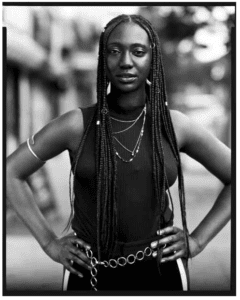
Photo © Robert Kalman
Of his Beaufort visit, Robert said he had an especially productive morning at the Port Royal Farmer’s Market. Among others, he shot portraits of a boiled peanut vendor, a Marine, and a Marine spouse – a “stunning young woman” from Trinidad. “She was in the process of getting her citizenship,” said Robert, and was cradling her American-born baby to her chest in a sling. “We talked about the opportunities she saw for the baby.”
Robert found the Marines he talked with to be particularly sincere in their patriotism. “I didn’t hear background music swelling up behind me when they spoke. They weren’t giving me pap, or standard issue Marine Corps jargon. They recognize that they’re serving their country because they love it. They’re willing to give their lives.”
In general, according to Robert, people in the South seem more “upbeat and positive” about their American identity than the New Yorkers did. “With the exception of the Lumbee in North Carolina,” he said. “They were so friendly and welcoming, but a bit more conflicted.”
But “upbeat and positive” doesn’t necessarily mean simplistic.
“I really didn’t know what to expect from Southerners,” Robert said. “I thought maybe there’d be a lot of flag waving and ‘I love America no matter what,’ but it hasn’t been like that.”
For instance, Robert met a Black police officer in Montgomery who told him, “The problem with being a Black man in America – and a police investigator – is that I’m too Black for the blue and too blue for the Black. My Black brothers and my blue brothers don’t understand that I’m caught in the middle.”
A woman he met the same day told him, “It’s very hard to be Black in America, harder to be a Black woman in America, but I wouldn’t want to be anywhere else than America.”
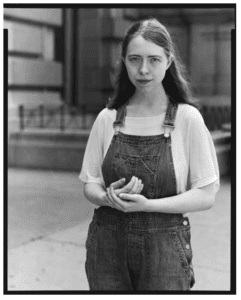
Photo © Robert Kalman
He met a homeless woman who said, “I’m down and out right now, but I still have faith in my country,” and a man covered in tattoos who said, “I’ve been all over, I’ve been to prison, but in September, Jesus found me and I’m content.” A well-dressed sales executive in Florence declared, “Second only to salvation, provided by the blood of Jesus, being an American is the greatest gift.”
Robert told me he hears more mentions of God and Jesus on any given day in the South than he heard in all the months he shot portraits in New York.
“The deeper I go, the more amazed I am that we’re one country,” he said. “Our values are just so different.”
Robert didn’t seem troubled by this realization, though. He just seemed . . . intrigued. Maybe even a little inspired.
“There have been moments during this project when I am so struck, emotionally, by what the people are saying to me, I start to feel overwhelmed. I don’t want to lose it in front of them, but some of them are so profound, I’m almost moved to tears.”
Unfortunately, I never got around to asking Robert to answer his own question: What’s it like for you to be an American?
I have a feeling his answer would be more complicated now than it was a year ago.
To view more of Robert Kalman’s work, visit www.robertkalmanweb.com

